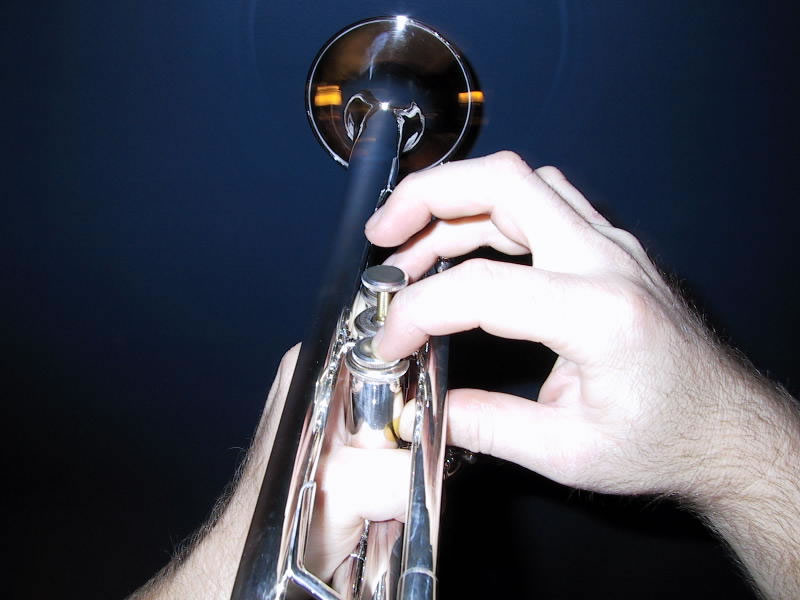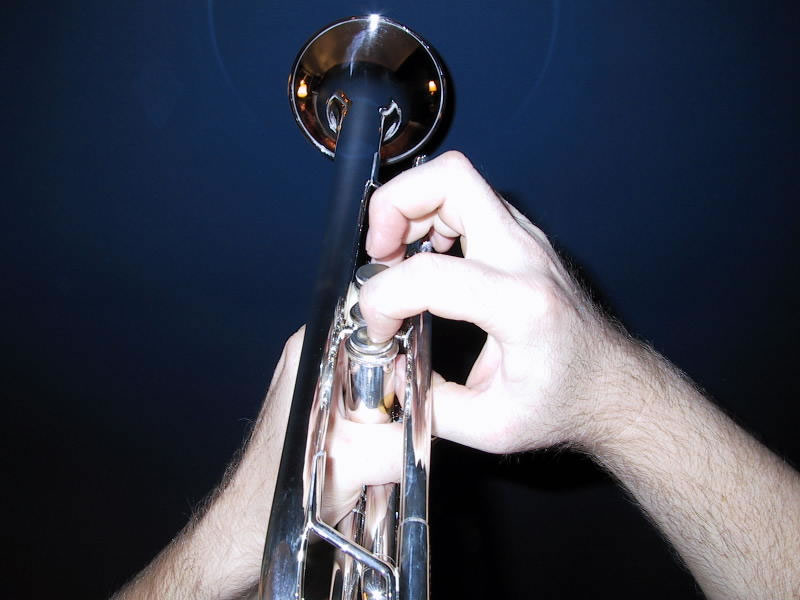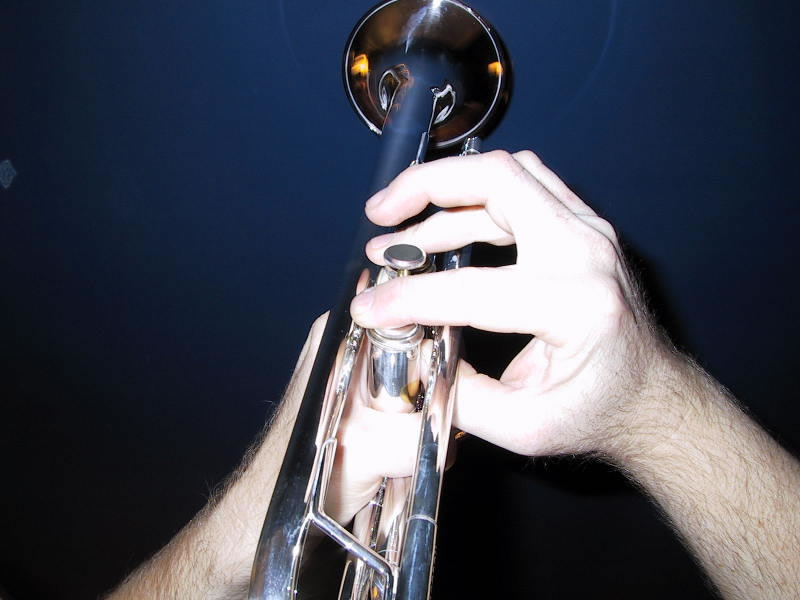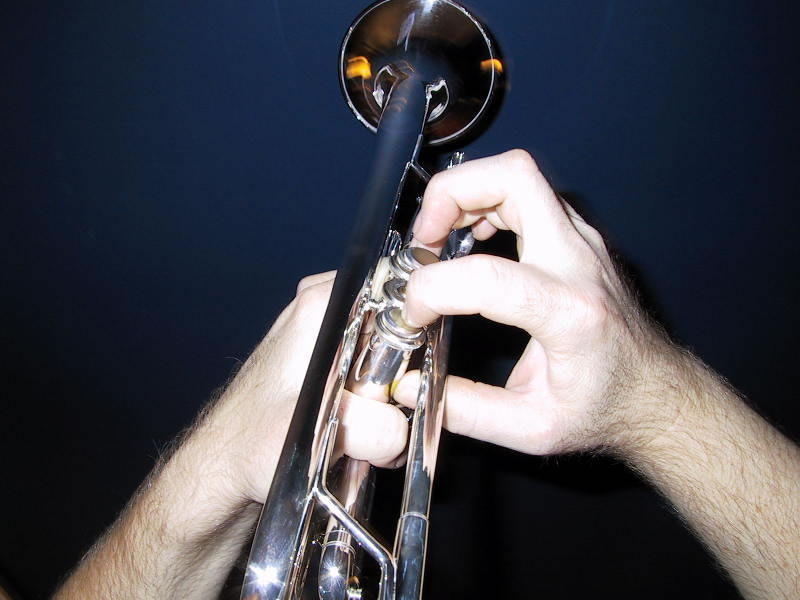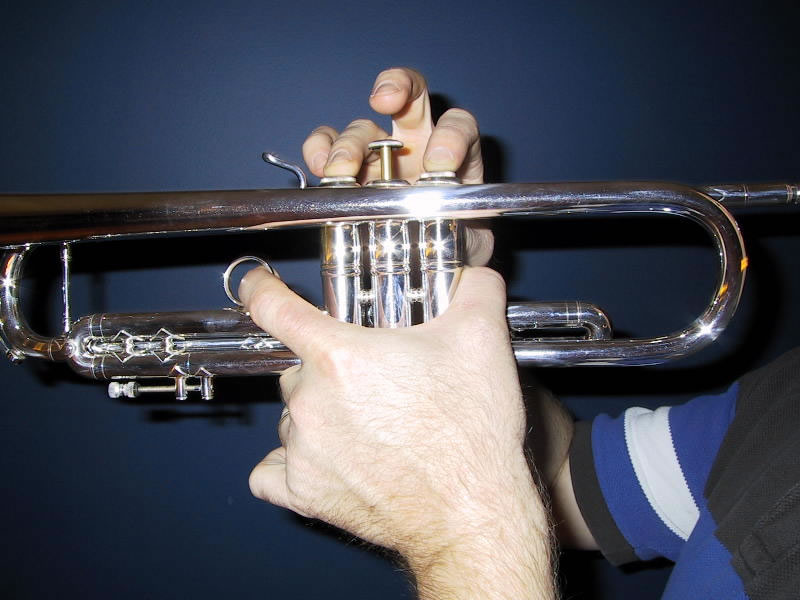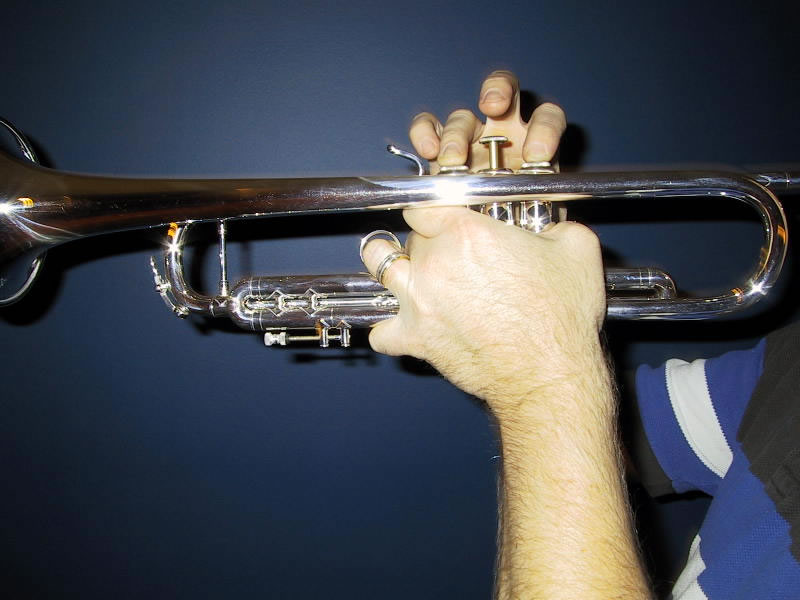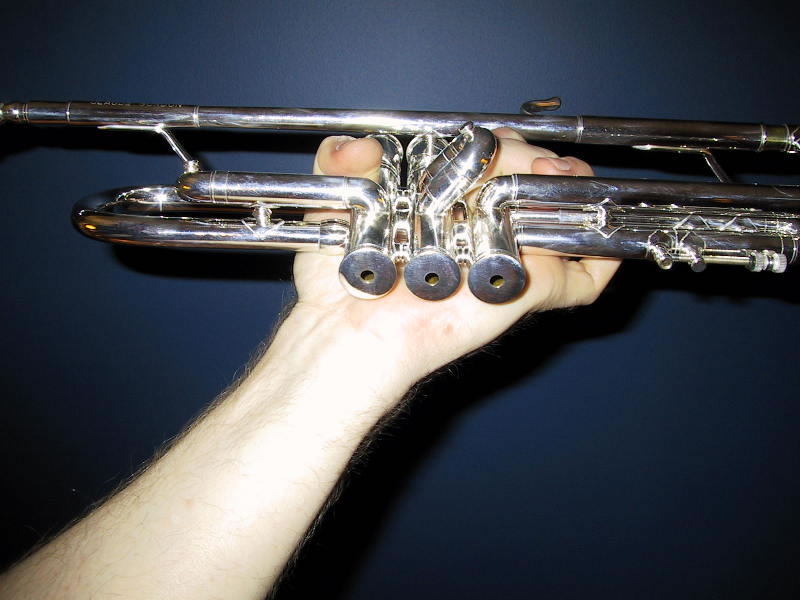Correct Hand Position for Trumpet and Brass
In this article two of the seven fundamental physical items of Brass Playing are going to be explained. This article is meant to accompany the article How To Practice. The article What To Practice also explains how to apply all the Seven Basic Items in a daily practice routine using the various known method books.
Hand Position includes two items: The Fingers Of The Right Hand and The Grip of The Left Hand as applied to the trumpet. The French Horn will have a slightly different application as the hands are reversed and the right hand is involved in other functions.
To most people finger position is insignificant as a concern. But, it becomes an issue when the player desires to achieve the highest of goals in regards to speed and agility. The habits that are started at the beginning stages of playing can lay a solid foundation for success or doom the player to future frustration and failure. That is why this should be a big concern to every player.
The obvious function of the Fingers of The Right Hand is to control the valves. The Grip of the Left Hand must be firm and solid in order to completely hold the weight of the horn and thereby completely free The Fingers Of The Right Hand to only control the valves.
CORRECT (Firm Grip with Left Hand)
CORRECT (Right Thumb Straight on the First Valve, Strike Valves Hard on The Ball Of The Fingers and Lift Fingers High)
The thumb of the right hand must remain straight and not bent at the knuckle. The thumb should be ON the first valve and not between the first and second valves. The tendency with everyone that places their finger between the first and second valves is to further bend the thumb's knuckle and thereby shift the right hand in closer to the valves. This makes it impossible for the fingers to strike on the ball of the fingers. The fingers either will press on the tips or flatten. The use of the tips will result in a cramped and tight hand position and the flattened position will result in loss of control and leverage with the fingers. The goal is to have the fingers in a position that is the fastest and most relaxed position in order to play and never get tired. I believe that most player's complaints of carpal tunnel syndrome are a direct result of incorrect hand position.
INCORRECT (Right Thumb Bent and Finger Tips on Valves)
INCORRECT (Right Thumb Bent and Fingers Flat on Valves)
The little finger of The Right Hand should not be put in the finger hook, except when needed for a page turn, use of a plunger mute or another brief use of The Left Hand. Placing the little finger in the finger hook inhibits the movement of the third valve finger and allows for the bad habit of using it to apply more than necessary pressure to the lips when playing.
The issue of Striking The Valves Hard versus pressing the valves and not lifting them off the valve caps is an issue worth covering too. It comes from the belief that more movement will slow you down. In practice this is not the case. As the fingers are trained in striking the valves and lifting the fingers high it results in more instantaneous reaction and clarity as the valves are either up or down and nothing else. Precise valve alignment is negated if the fingers are allowed to rest on the valves even slightly depressing them and if the valves are not held down completely. The result will be loss of response and a sacrifice of one of the other seven items, Wind Control, which is closely related with the two items being discussed.
Stamp that Claude Gordon put on every finger exercise
The Grip of The Left Hand too serves an important function in the control of the horn. It must be firm so as to not be easily disturbed by the striking of the valves. The wrist must be relaxed so as to accommodate movements specific to each player in response to movements of the face. It too has a specific correct position in maintaining the valve casing in a vertical position and not rotated in a clockwise fashion. The error in the rotation of the valves is that it throws the Fingers of The Right Hand out of alignment and results in the same problems as having a bent right thumb or the right thumb between the first and second valves. This all results in a more cramped finger position.
INCORRECT (Horn Rotated Clockwise and Finger Tips on Valves)
Admired players are sometimes immulated without thought as to why it is being done. Maynard Ferguson, undoubtedly a trumpet legend, is sometimes immulated in his left hand grip. Claude Gordon in his classic response to this says, "When you can play like Maynard then you can hold it anyway you wish! But, until then you hold it correctly!"
INCORRECT (Unstable Left Hand Grip AKA Maynard Ferguson Grip)
CORRECT (Left Little Finger Under Third Valve Slide - an option for bigger hands)
There are some people that have larger or smaller hands than others and their hand might not fit in order to place the ring finger of the left hand in the finger ring. If this is the case some may place their little finger under the third valve slide. For some with very small hands their little finger will fit in the finger ring and the other three fingers can fit around the valve casing. The point is that the valve casing should rest in the palm of the left hand in order to be stable.
CORRECT (Valve Casing Resting in the Palm of the Left Hand for a stable and comfortable grip)
Remember that the Seven Basic Items work together as a complete machine as covered in the article How To Practice. They must each be trained specifically so as to function correctly by habit. There will undoubtedly be people that read this and say that it is too hard to do it in the described manner. Once habits are developed it takes concentrated effort to correct them. Things that seem to be more difficult that are correct will only become easy and be fully understood through the type of practice routine explained in the What To Practice article.
©2003 Jeff Purtle



